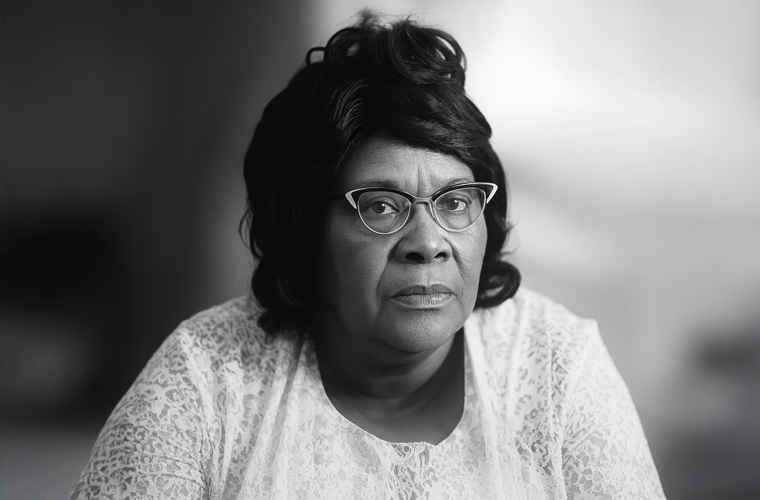The Voice of Gospel and Healing in the Mississippi Delta
Fannie Bell Chapman, born Fannie Bell Norman in 1900, was a revered gospel singer, faith healer, and folk artist whose powerful voice and spiritual gifts left an indelible mark on Southern folklore and African American religious traditions. Hailing from Centreville, Mississippi, Chapman’s life embodied the rhythms of rural Black spirituality, where music, prayer, and healing intertwined to uplift communities during the challenges of the Jim Crow era and beyond.
Born at the turn of the 20th century, Chapman grew up in the heart of the Mississippi Delta, a region rich with blues, gospel, and spiritual resilience. Little is documented about her childhood, but her deep-rooted faith likely formed amid the hardships of sharecropping and segregation. By the mid-20th century, Chapman had established herself as a pillar in her community, leading family devotions and church services where song served as both worship and solace. Her maiden name, Norman, reflects her early ties to the area, and she later married, taking the surname Chapman, with whom she raised a family that shared her passion for sacred music.
Chapman’s household was a hub of spiritual expression. She and her daughters frequently gathered to sing hymns and pray, turning everyday moments into profound acts of devotion. This familial harmony was central to her identity, as family members often reflected on their shared calling to spread the Christian gospel through song and testimony.



Chapman’s dual gifts as a gospel singer and faith healer set her apart in Southern folk traditions. Her performances were not mere concerts but immersive experiences of ecstasy and restoration. During church services and home gatherings, she would belt out soul-stirring anthems like “I Know It Was the Blood,” her voice rising in fervent testimony that drew listeners into a collective trance of praise. Tracks such as “We’re So Glad to Be Here” capture the raw, unpolished joy of her style, now preserved on platforms like Apple Music and Spotify.
As a healer, Chapman’s practices were equally compelling. In sessions at her home, she laid hands on the afflicted, invoking divine intervention that often culminated in her speaking in tongues—a charismatic outpouring seen as a direct communion with the Holy Spirit. Family discussions in her circle emphasized the “call to heal,” viewing it as an extension of their faith journey, much like the biblical healers of old. These rituals not only addressed physical ailments but also mended the emotional scars of a marginalized community, fostering hope in the face of systemic oppression.
Her influence extended through recordings and performances in the 1970s, a period when folklorists began documenting such vernacular traditions. Chapman’s authenticity resonated with scholars and audiences alike, positioning her as a bridge between oral history and modern preservation efforts.
In the early 1970s, ethnomusicologist William Ferris captured Chapman’s world in a groundbreaking 16mm color documentary titled Fannie Bell Chapman: Gospel Singer (1975). Produced by the Center for Southern Folklore with funding from the Rockefeller Foundation, the National Endowment for the Arts (NEA), and other sources, the 42-minute film offers an intimate portrait of her life. Directed by Ferris, Judy Peiser, and Bobby Taylor, it features vivid footage of Chapman and her daughters singing during services, intimate home prayers, and a riveting healing ritual in which Chapman speaks in tongues after the healing.
The film aired on PBS’s Southbound series in June 1976, introducing urban audiences to the depth of rural Mississippi spirituality. It remains a cornerstone of folk studies, available through Folkstreams, and has inspired renewed interest in Chapman’s legacy, including recent social media tributes as late as 2025.
As Chapman entered her later decades, her influence persisted through family and archival work. By the 1980s, press photos captured her enduring presence as a symbol of faith and resilience. She passed away on March 4, 1996, at the age of 95 in North Carolina, where her funeral was held at Knob Creek United Methodist Church in Belwood, followed by burial in the church cemetery. The move to North Carolina in her final years suggests a quiet relocation, perhaps to be near family, away from the Delta’s familiar soil.
Today, Fannie Bell Chapman’s legacy endures as a testament to the power of Black women’s voices in preserving cultural and spiritual heritage. Her music continues to stream, her film to educate, and her story to inspire those seeking the intersection of art, faith, and healing. In an era of digital rediscovery, Chapman reminds us that some truths are best sung from the heart.

